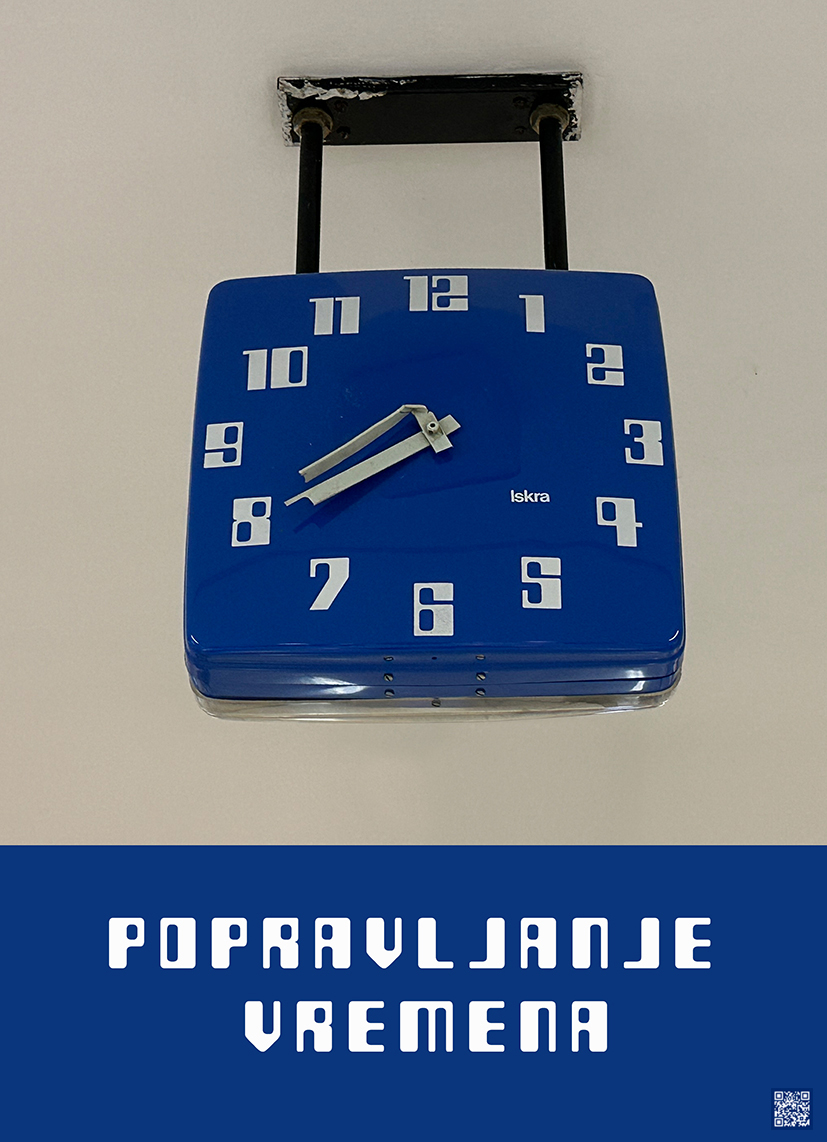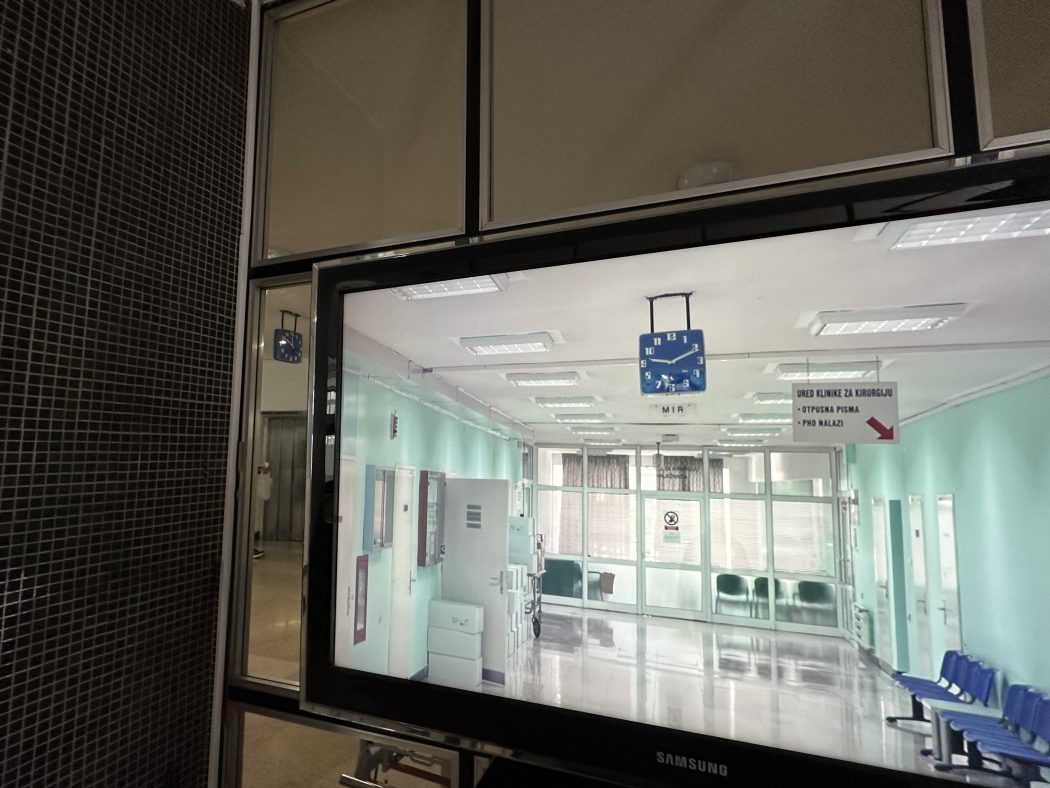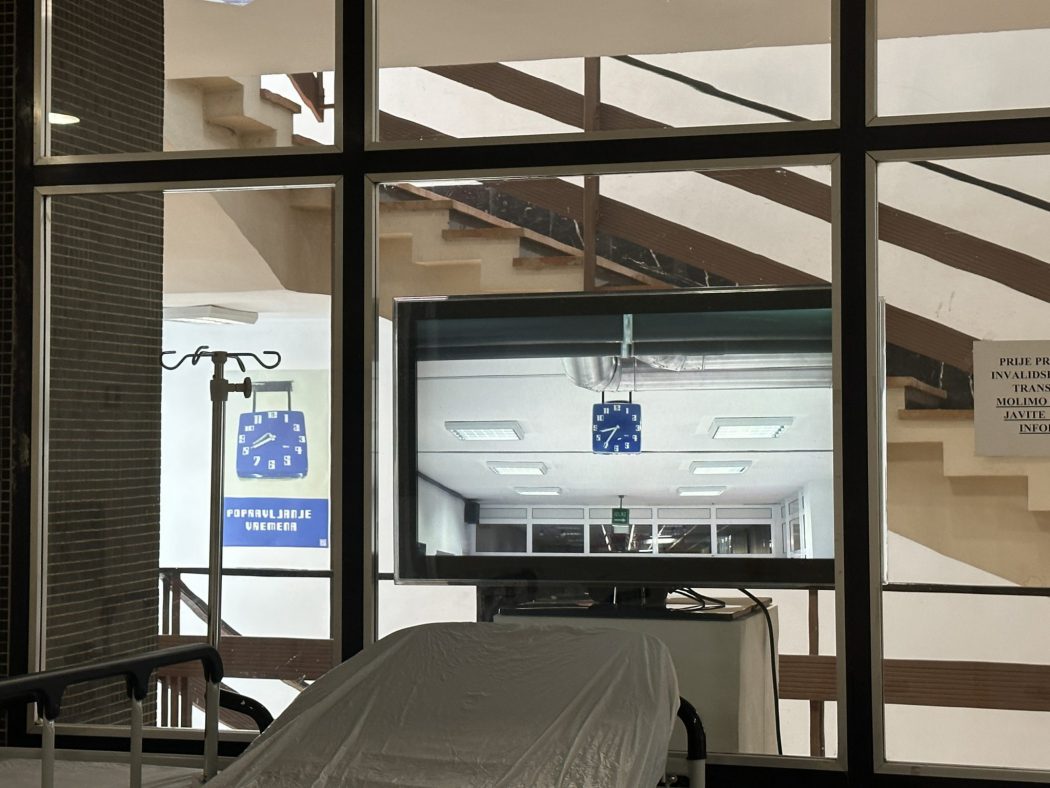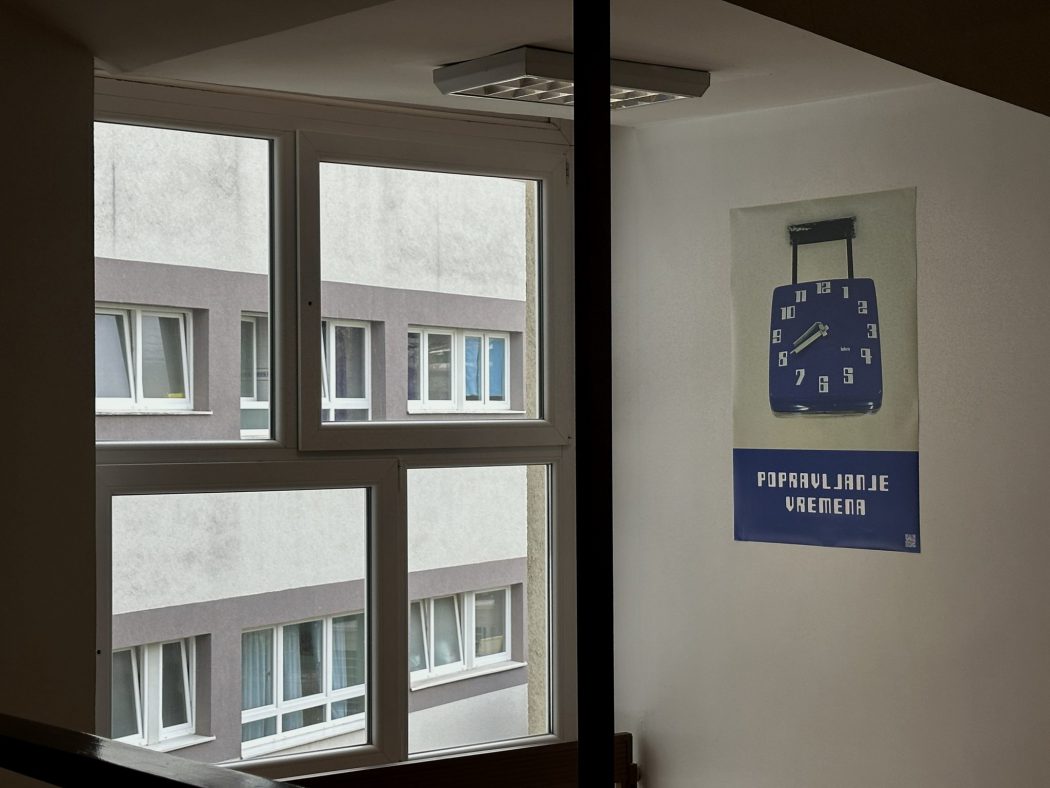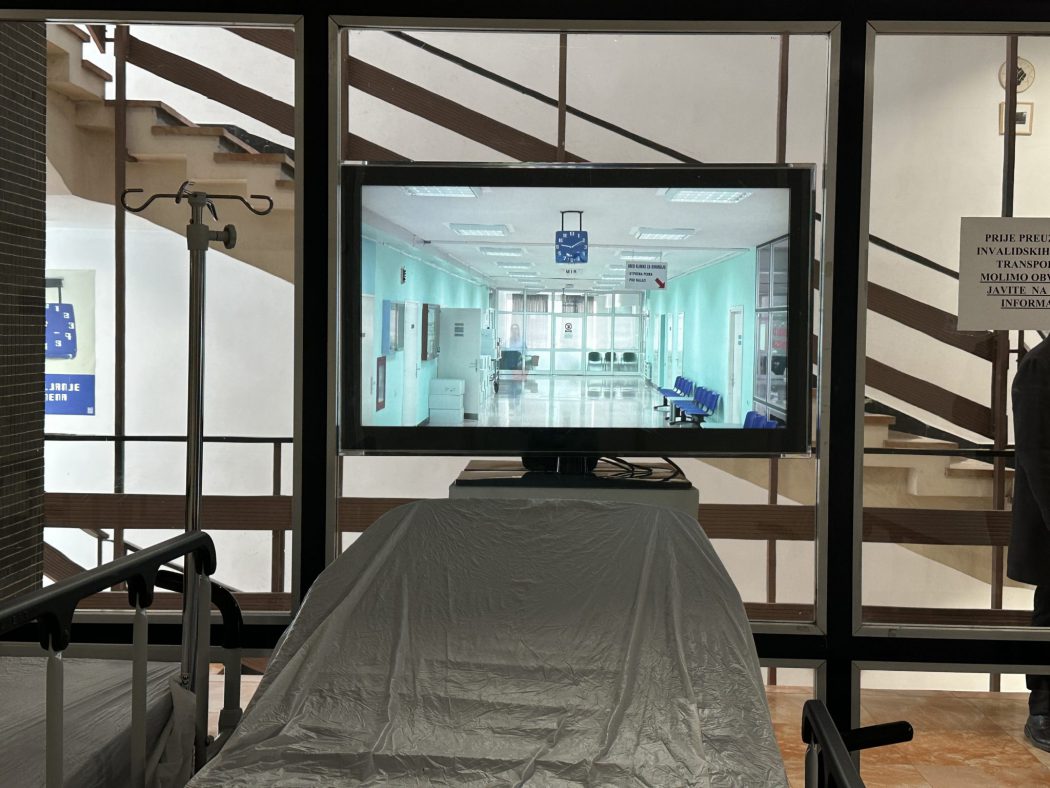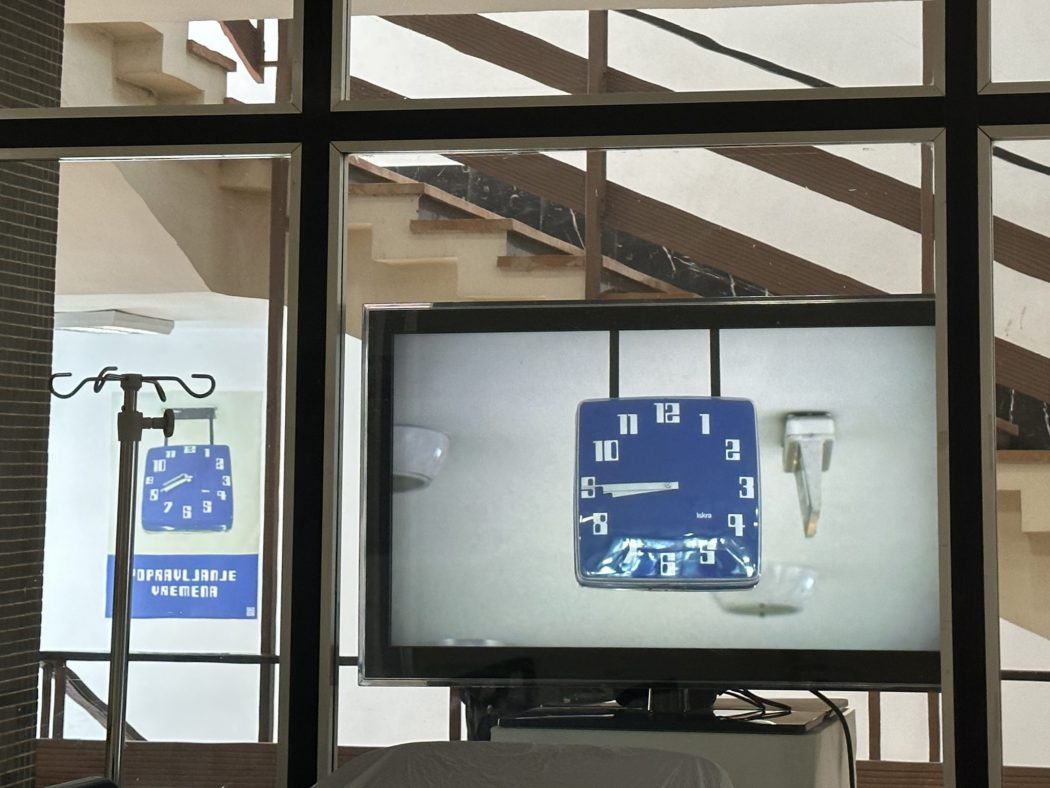ARTIST’S STATEMENT
Mending Time is an art intervention that consists of repairing clocks in the hospital corridors and wards that have been out of order for many years.
It was realised within the framework of the Zoja Dumengjić Gallery program, as part of the collaboration between the Croatian Association of Visual Artists (HULU) Split, and the University Hospital Centre Split (KBC Split). It addresses the concept of time within the context of the functional hospital system that strives for precision (start and end of surgeries, timely arrivals, emergency) as well as the time of the beginning and end of life. Mending Time operates on multiple levels, from the pragmatic (the blue “Iskra” clocks are indeed repaired and returned to their places) to the symbolic, poetic, and utopian (fixing the time of illness, dysfunctionality of the general system, the shortage of resources confronting the public health system). This simple act of solidarity patches a temporal gap in the system and is a tribute to those who frequent the hospital, endure waiting rooms, and especially to those valiantly confronting the daily challenges of the system, exerting superhuman efforts to ensure its functionality and service to people in need. It is a somewhat ironic and absurd act. An attempt to mend both time and life, overtime work, and the exhausting period of the pandemic. Clocks displaying accurate time provide a certain assurance that the system, on a micro-level, is still functioning. Even though they might be deemed unnecessary in the era of mobile phones, these clocks bear witness to a time of analogue precision, an illusion of security, raising the gaze of many in a common direction. Mending Time is a call for the system to function, but also a concern for the encroaching time.
Neli Ružić
CURATOR’S TEXT
Take a moment to pause, lift your gaze, and observe your surroundings closely. Can you spot the square clock, intensely blue, featuring a distinct white dial? The contrasting and uniquely fragmented white retro-futuristic typography, the so-called Rollerball 1975 font, on a blue background. If you continue observing, you’ll find them occupying every hospital corridor and some waiting rooms. Some among you might recall these clocks adorning the spaces of your distant school hallways, guiding breaks and signalling for school obligations with their chimes. But doesn’t it seem to you that our gesture of looking at the clock has atrophied, it is simply an impulse that we have gradually suppressed? We don’t rely on it anymore. Because when was the last time you looked at a clock that wasn’t already there, on the interface of your mobile phones or smartwatches? That time hasn’t already outpaced you. In the past, people seem to have kept a safe but conscious distance from time, a more articulate rhythm of days, whereas today, everything appears just stuck within or onto ourselves… That is precisely the focus of Mending Time. In her years-long exploration of the social and perceptual aspects of time, visual artist Neli Ružić initiates and oversees the action of tuning the mechanical clocks in the hospital that have stopped ticking for some time, in collaboration with electromechanical technician Zvonko Burger, thereby also drawing attention to the almost extinct profession of watchmaking in these parts. The old clock manufactured by Iskra becomes the main conveyor of this program, accompanied by Mending Time posters that recreate the typography game of the previous clock face, along with a related video that illustrates the gesture and process of repair within the hospital context. From this, it can be inferred that this seemingly simple action is anything but mundane. It is significant to everyone. Can we mend the time that’s already passed? As biological beings, we are aware that this is almost an oxymoronic concept. Yet, perhaps this way we can collectively become aware of it, catch the rhythm, pause for a moment. Because by thinking that we will tame time with all our valuable technological creations, we chase-remember-mark this moment with even more significance. Let the clocks do their part. The rest is up to us.
Ivana Meštrov
